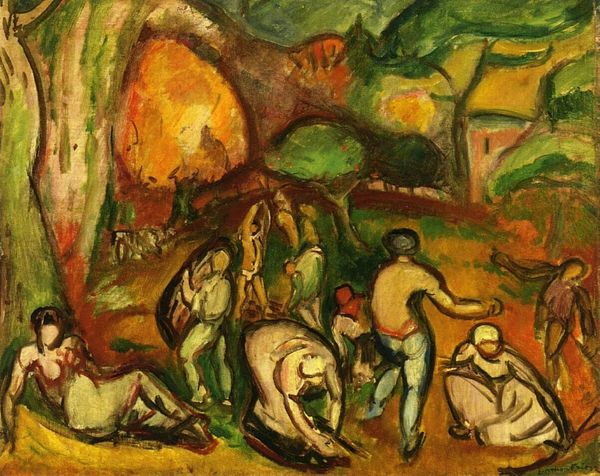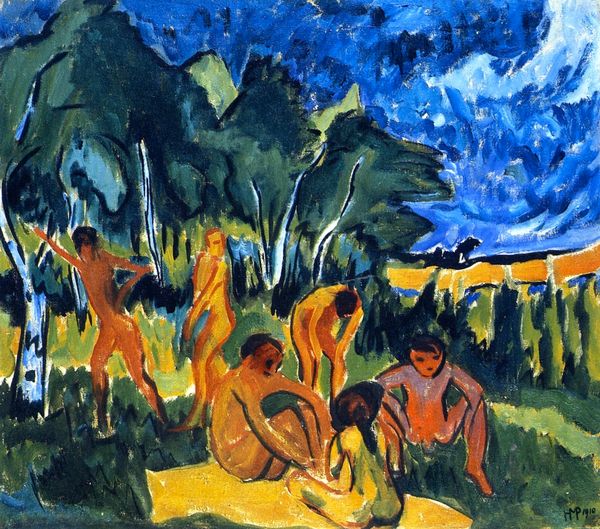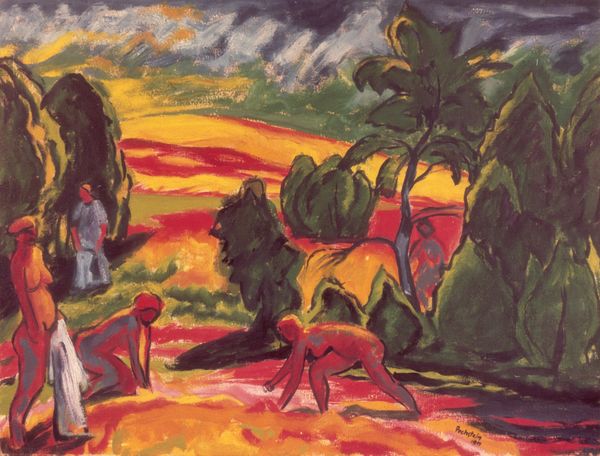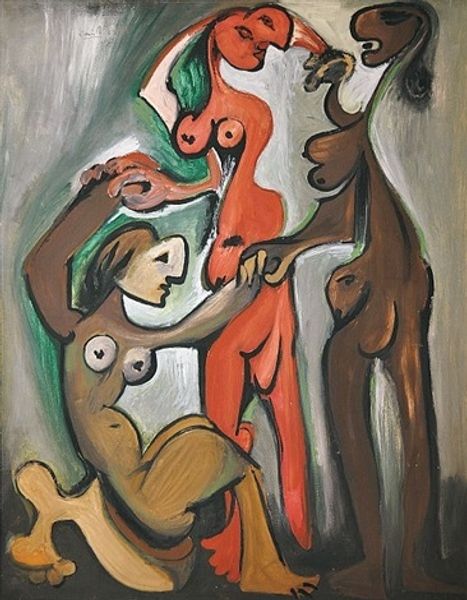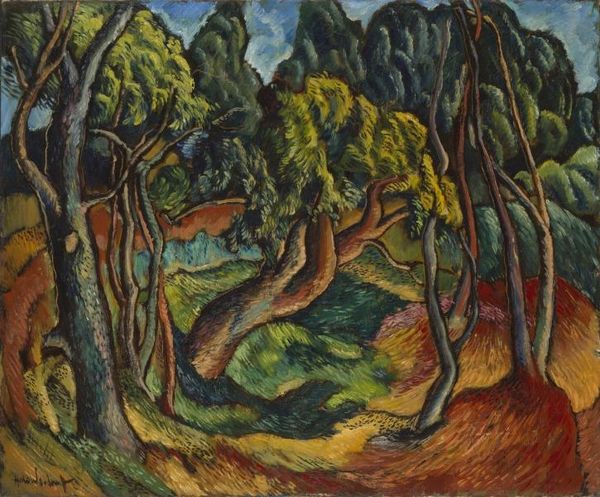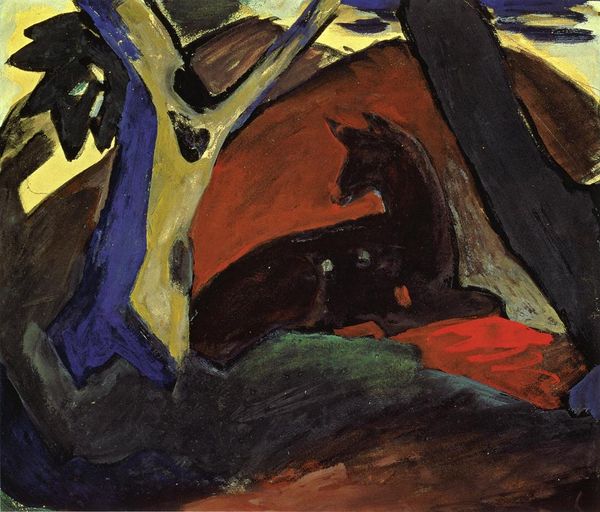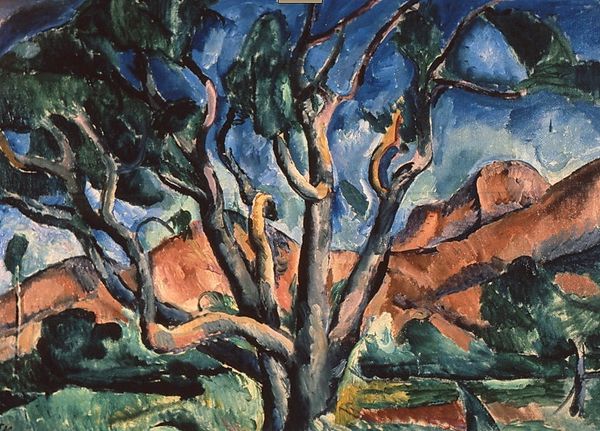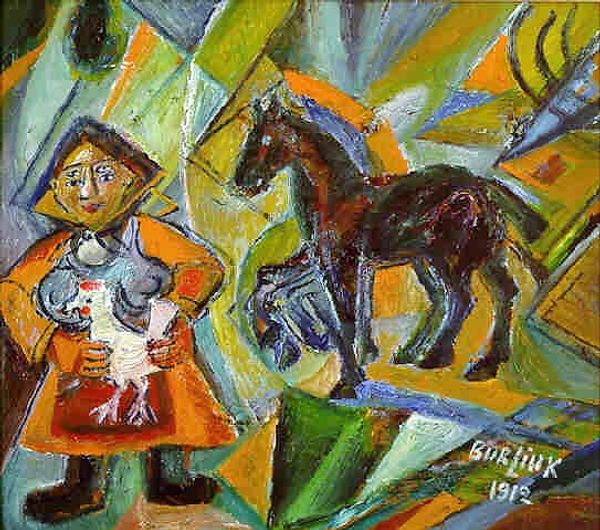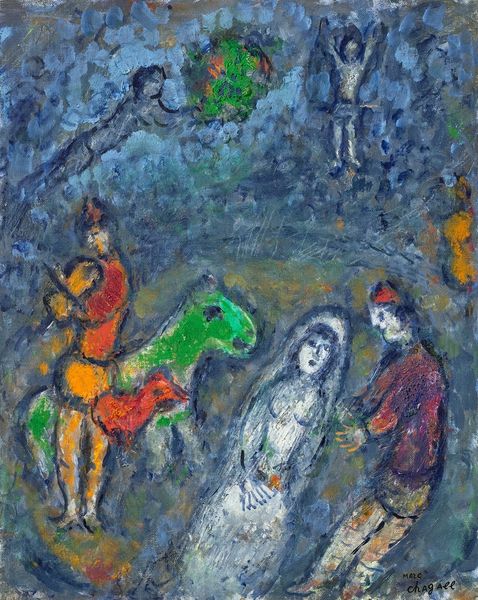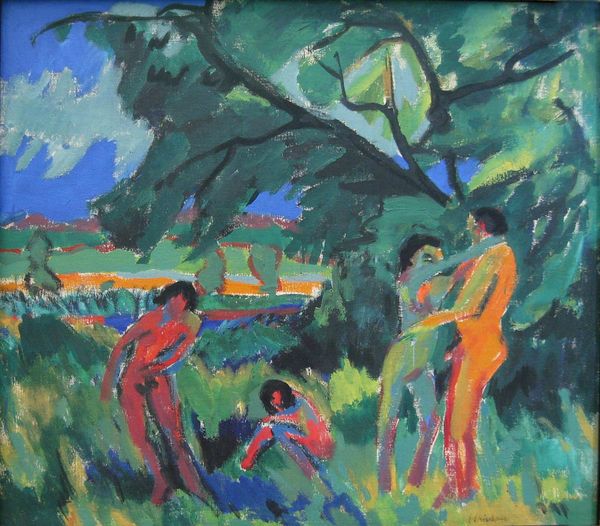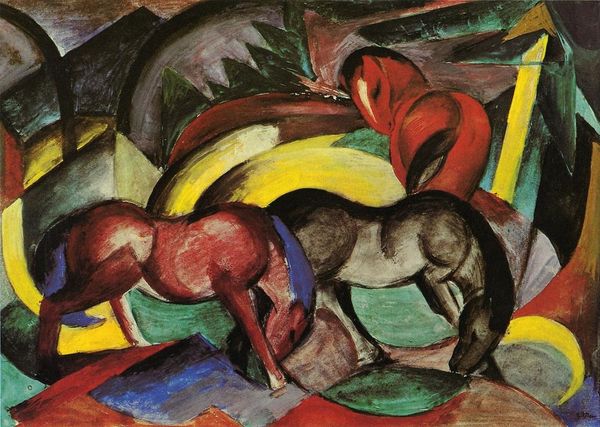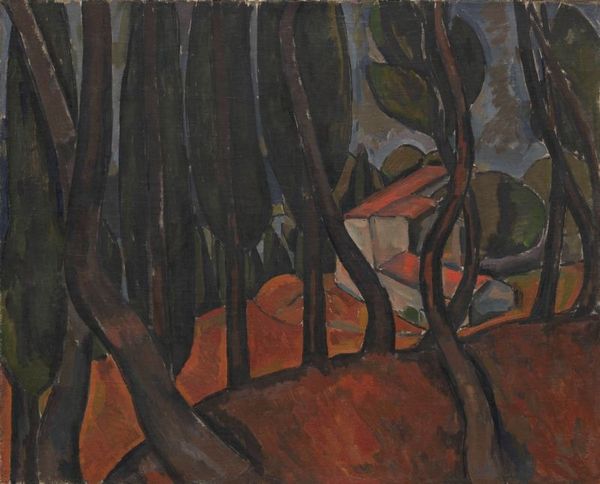
Copyright: Public domain US
Curator: This is Max Pechstein's "Day of Steel" from 1911, an oil painting full of expressive colors. It's rather striking. I am initially drawn in by the artist’s use of such vibrant colors and dynamic composition; the orange path leading towards the middle distance. How would you interpret the artist's intent behind these visual choices? Editor: Well, immediately, the composition seems purposefully flattened, eschewing traditional perspective. And the colors are so…bold, even discordant in places. It evokes a dreamlike quality to me, perhaps even a slightly unsettling one. But how do these elements contribute to the overall reading of the piece from a Formalist point of view? Curator: Precisely. The flattening serves to emphasize the picture plane, drawing attention to the relationships between forms and colours, rather than creating an illusion of depth. Look at the way Pechstein juxtaposes the vivid oranges and yellows with the cooler greens and blues. It's a Fauvist technique that creates tension and energy within the composition. Are these clashing colors simply decorative, or is something more at play? Editor: I hadn’t considered that tension as a deliberate strategy. Perhaps it reflects a broader unease of early 20th-century life with its increasing industrialization? Curator: Indeed. Note, for example, how he simplified the forms of the figures and trees, reducing them to near-geometric shapes. This abstraction pushes the image away from mere representation, forcing us to confront the inherent qualities of the paint and brushstrokes themselves. Editor: So, the materiality becomes almost as important as the subject matter itself? Curator: Exactly! The artist is prioritizing form and colour over narrative, creating an autonomous visual experience. Pechstein’s emphasis on formal relations, and how meaning emanates from it. Editor: I now recognize how this painting is about the visual elements of shape and composition and expressionistic form! Curator: Indeed! Pechstein delivers a forceful and fascinating study of this.
Comments
No comments
Be the first to comment and join the conversation on the ultimate creative platform.
